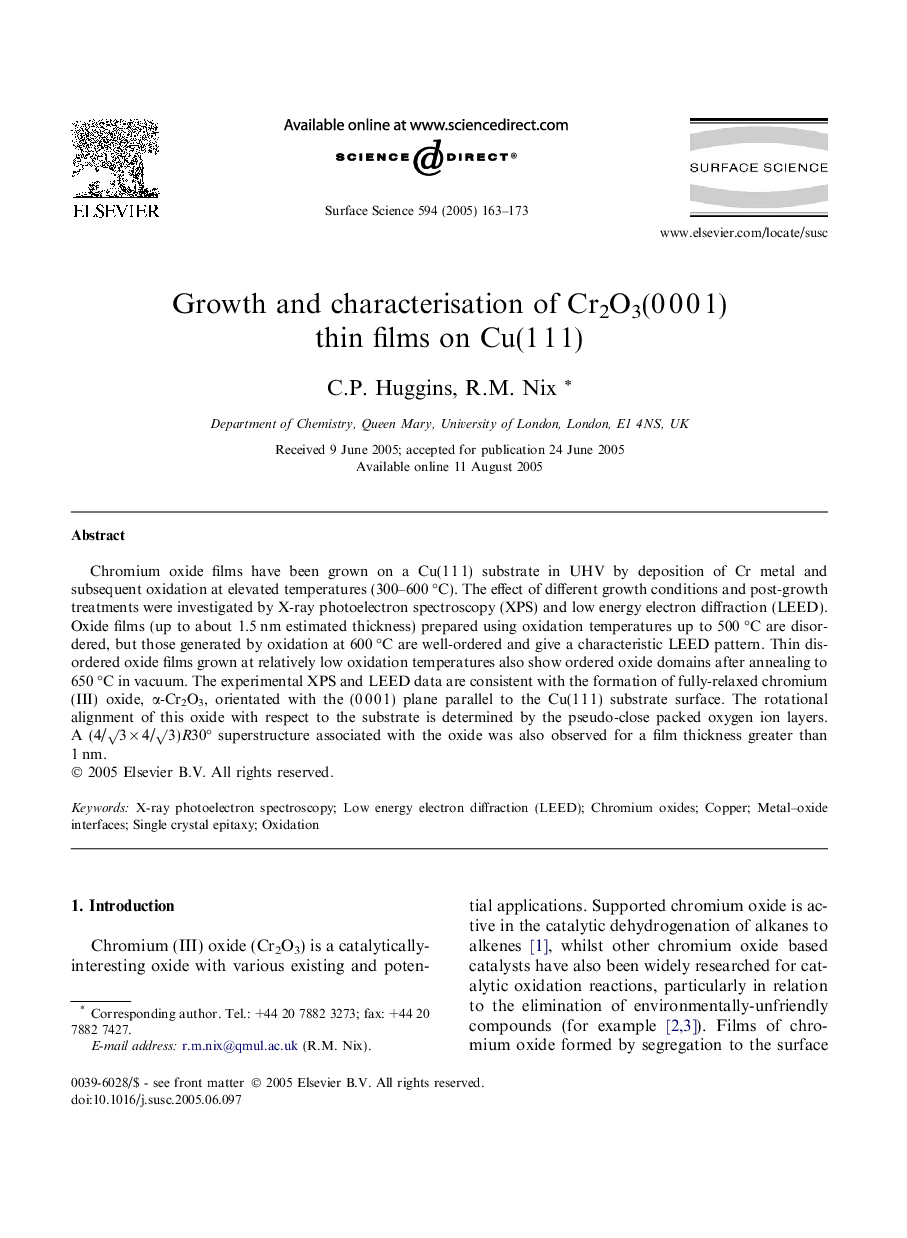| Article ID | Journal | Published Year | Pages | File Type |
|---|---|---|---|---|
| 9594968 | Surface Science | 2005 | 11 Pages |
Abstract
Chromium oxide films have been grown on a Cu(1 1 1) substrate in UHV by deposition of Cr metal and subsequent oxidation at elevated temperatures (300-600 °C). The effect of different growth conditions and post-growth treatments were investigated by X-ray photoelectron spectroscopy (XPS) and low energy electron diffraction (LEED). Oxide films (up to about 1.5 nm estimated thickness) prepared using oxidation temperatures up to 500 °C are disordered, but those generated by oxidation at 600 °C are well-ordered and give a characteristic LEED pattern. Thin disordered oxide films grown at relatively low oxidation temperatures also show ordered oxide domains after annealing to 650 °C in vacuum. The experimental XPS and LEED data are consistent with the formation of fully-relaxed chromium (III) oxide, α-Cr2O3, orientated with the (0 0 0 1) plane parallel to the Cu(1 1 1) substrate surface. The rotational alignment of this oxide with respect to the substrate is determined by the pseudo-close packed oxygen ion layers. A (4/â3 Ã 4/â3)R30° superstructure associated with the oxide was also observed for a film thickness greater than 1 nm.
Keywords
Related Topics
Physical Sciences and Engineering
Chemistry
Physical and Theoretical Chemistry
Authors
C.P. Huggins, R.M. Nix,
